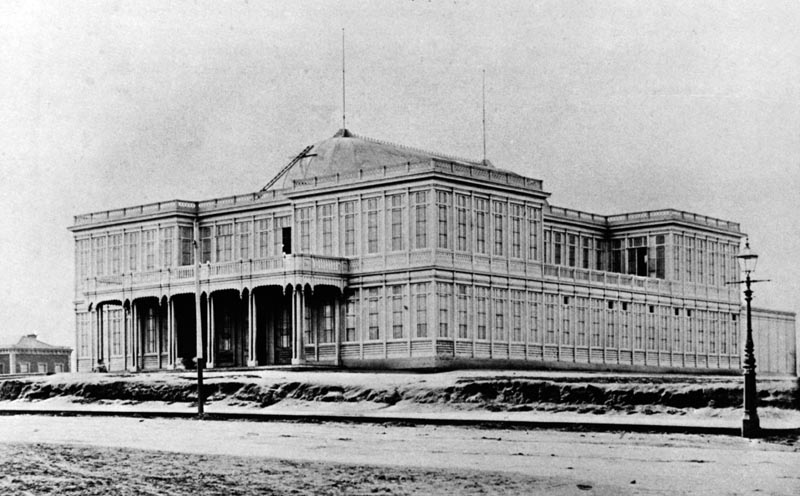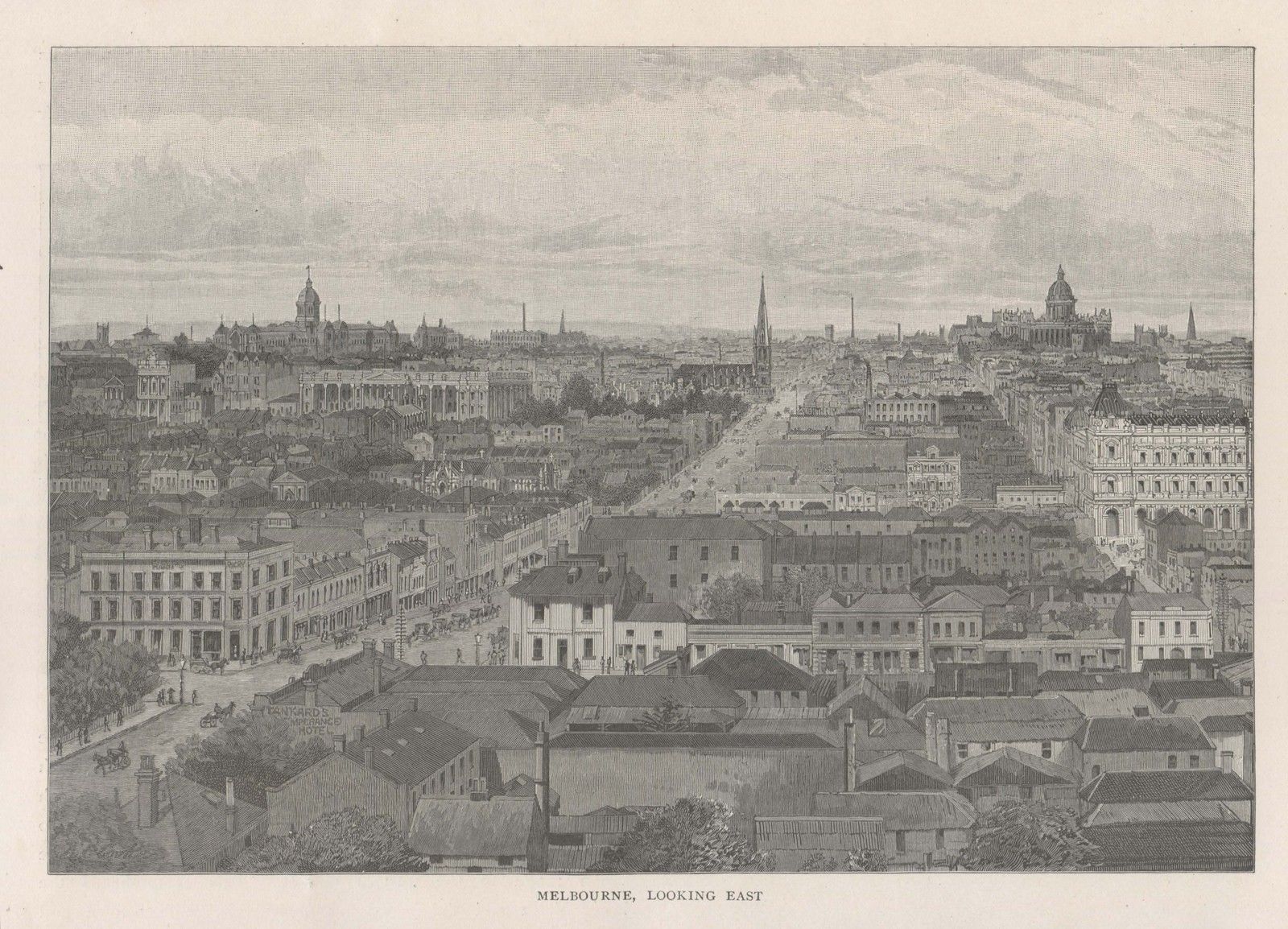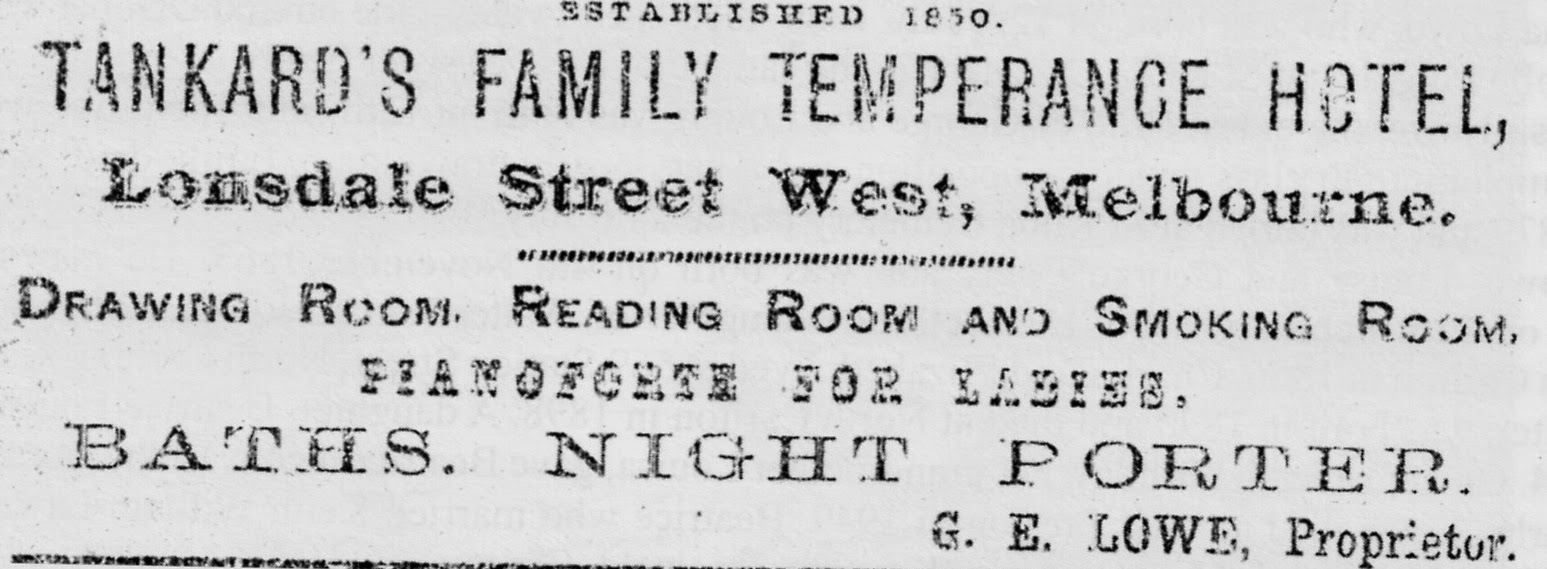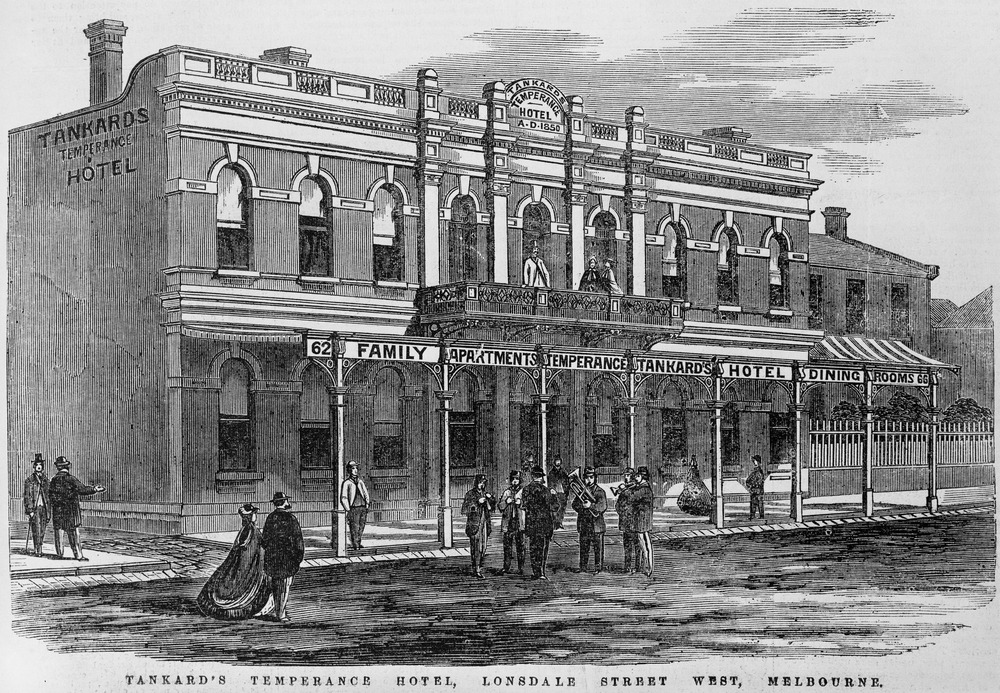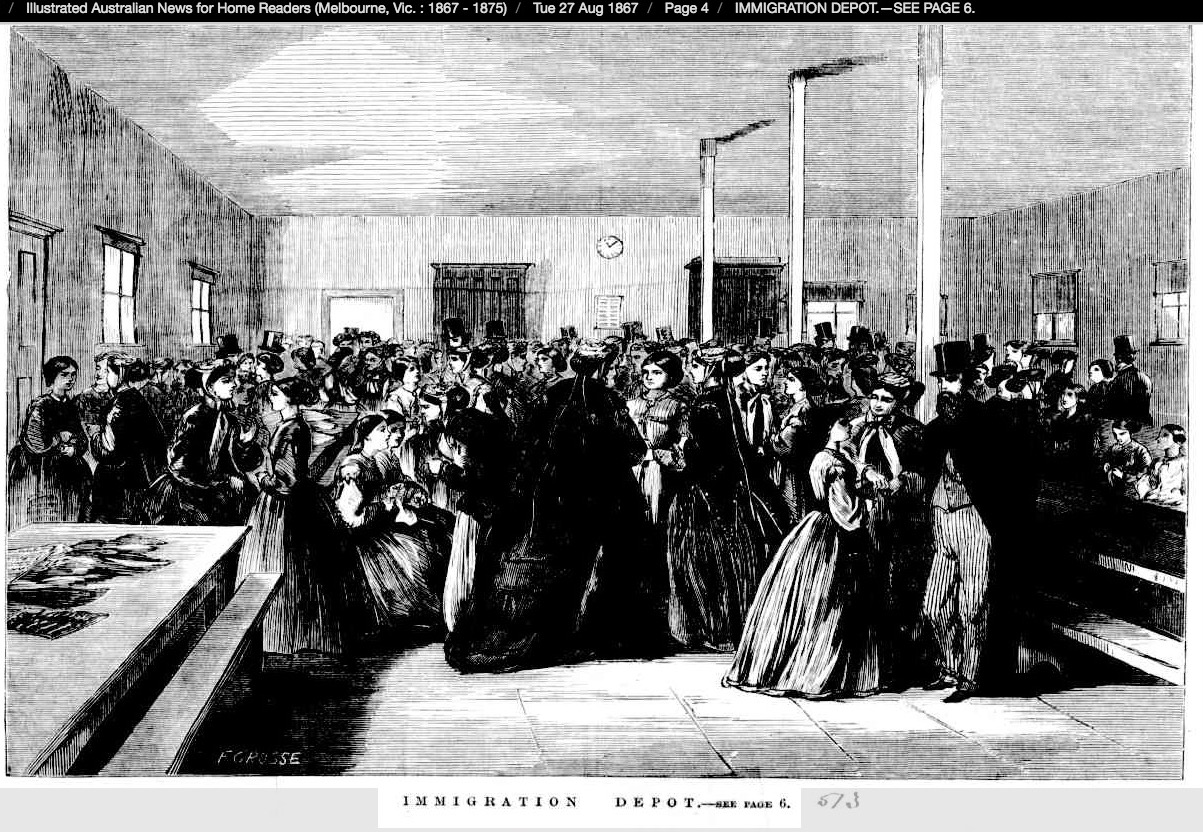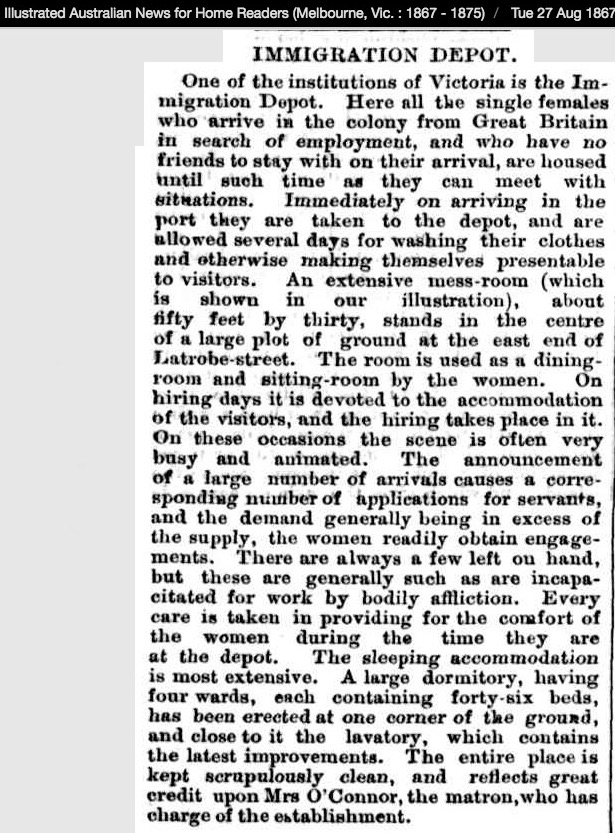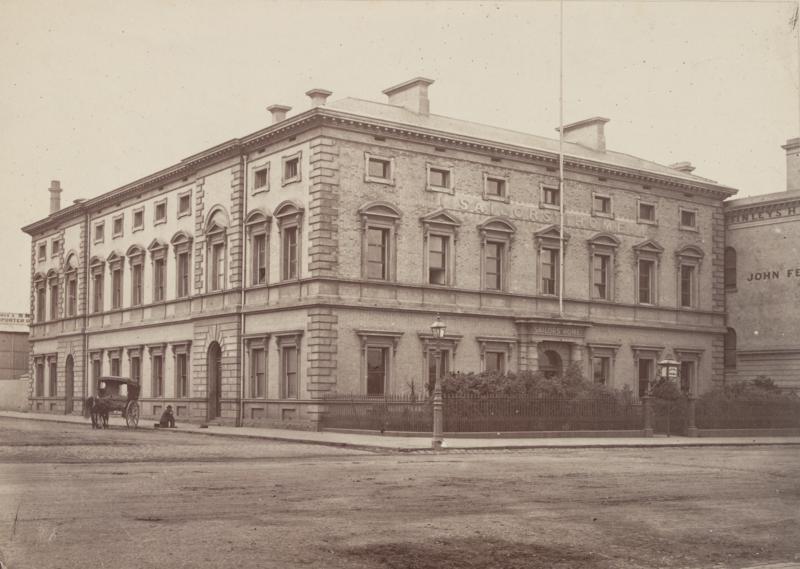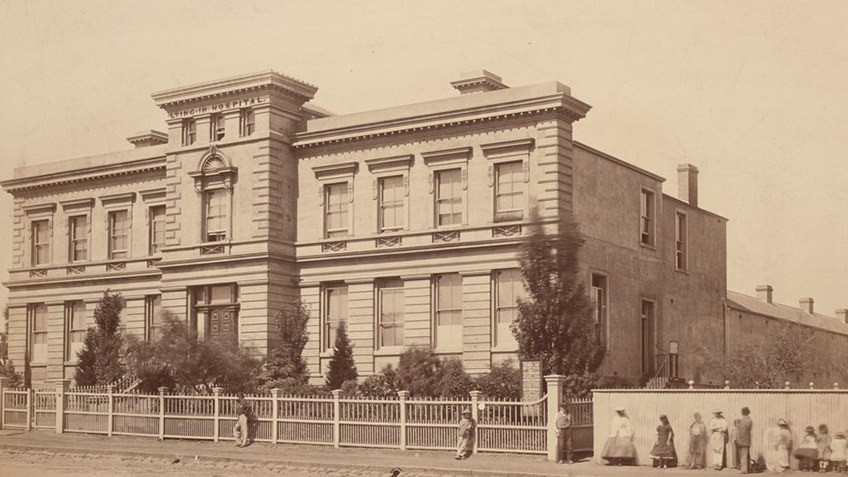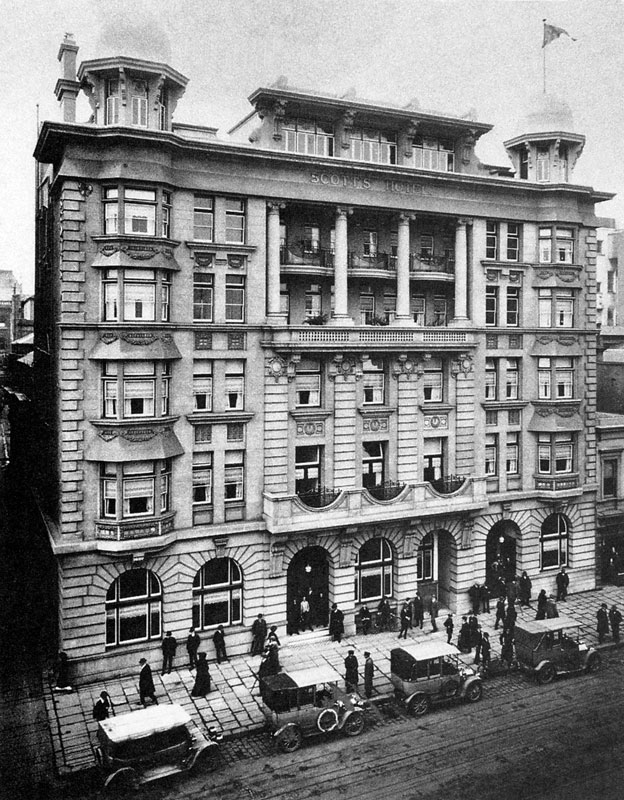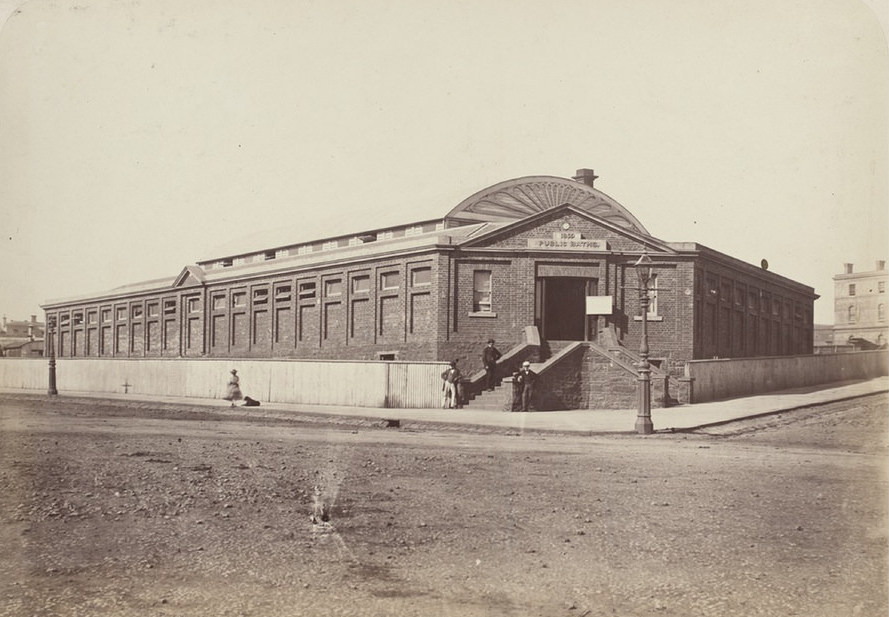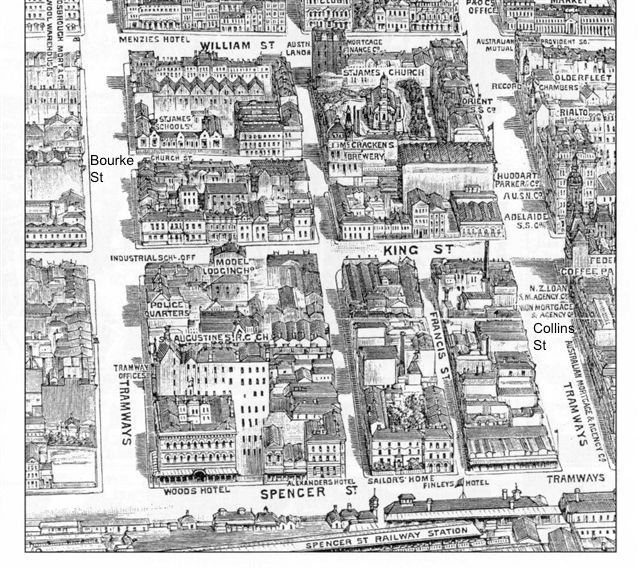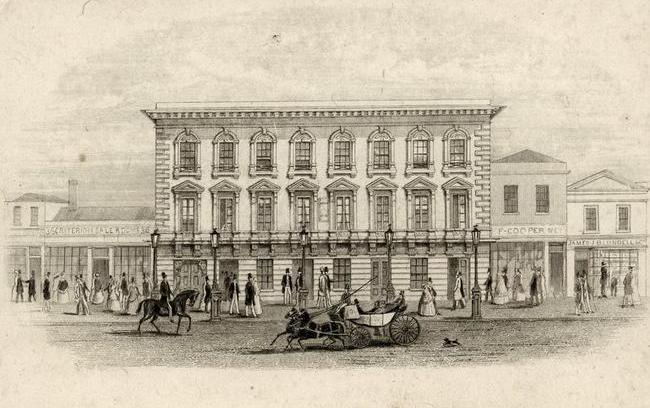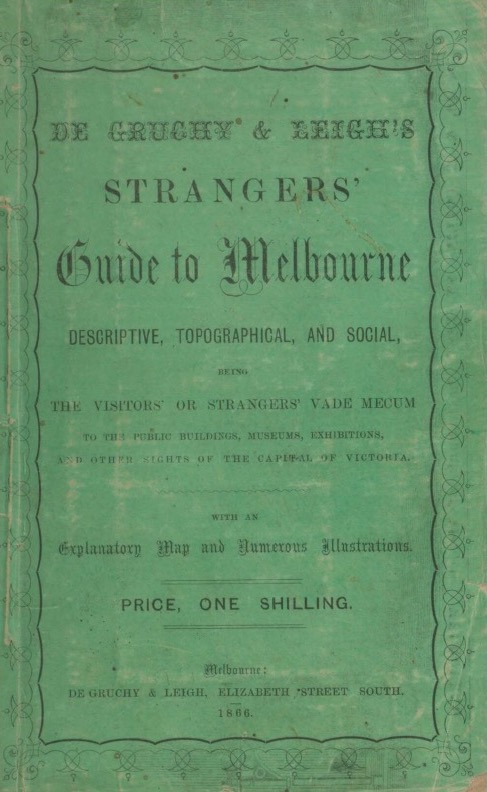The rescued passengers arrive in Melbourne and are accommodated in various locations around the city.
Upon arrival in Melbourne the first and second class passengers and Captain Owens and his officers were given lodgings at the Tankard's Temperance Hotel, the single females were sent to the Immigration Depot, the married couples & their children from steerage were taken to the Exhibition Building, and the crew to the Sailors' Home. Mrs Cubbin and baby were cared for at the Lying-In Hospital. Dr Webster went to the Scott's Hotel. The single men appeared to have been housed at both the Exhibition Building and the Military Barracks. The Mayor offered the free use of the Public Baths to all passengers.
Photos/Pictures & stories of the relevant buildings are below. Scroll way down to a map showing all locations. Note: some are huge images so give them time to open.
LEFT: The Exhibition Building – William Street - where the steerage passengers were accommodated after the rescue.
Melbourne's first Exhibition Building was built in 1854 (designed by Samuel Hendon Merrett and Thomas Merrett, architects and civil engineers, for the Melbourne Exhibition) and stood on the site in William Street between La Trobe and Little Lonsdale Streets
Its purpose was to accommodate the first exhibition on the Australian continent which was held from October to December 1854. As well as hosting exhibitions in 1854 and 1861 the building also served as the main concert venue for the Melbourne Philharmonic Society from 1854 to 1866, was used as temporary lecture hall for Melbourne University, hosted Temperance League rallies in 1857 and - for its final function of note - was the venue for the Vice Regal Ball of 1864.
The building itself was apparently poorly made, with persistent leaking of the glass roof. The glass roof also led to problems with heat in the interior during hotter weather, attempts to alleviate this by installing (at some expense) a canvas covering only led to problems with a need for continual maintenance of the canvas covering itself.
The building was eventually demolished in the late 1860's and the Mint was erected on the site during 1871-72.
Tankards - lower left
LEFT: Melbourne Sailors' Home: Spencer Street cnr Little Collins St. Where the crew were taken.
The Melbourne Sailors' Home was built in 1864 and was located on the corner of Little Collins and Spencer Streets just opposite the railway station. It was built to house visiting seamen until notice of their next voyage. It opened in February 1865 but extensions were made soon afterwards when it became apparent the original building couldn't cope with the high number of arriving sailors. In 1902 a new site for the Sailors Home was found nearer to the wharfs. The Melbourne Metropolitan Board of Works bought the building for £10000. The building lasted until 1969 before being demolished to make way for the new MMBW head office.
Photo: Charles Nettleton (State Library Victoria, Out of Copyright. Year poss 1885)
RIGHT: The Lying-In Hospital, Madeline St (Now Swanston St) Carlton - where Mrs Cubbin and baby Nettie were taken.
Photo circa 1868: The Melbourne Lying-in Hospital and Infirmary for Diseases of Women and Children opened its doors to the colony's poorest and most needy women in 1856, just two decades after Melbourne was founded. Women travelled from as far as Sydney and Adelaide for treatment at the hospital, which in 1884 changed its name to the Women's Hospital and in 1954 became the Royal Women's Hospital.
Historic newspapers report on the hospital's valiant efforts in difficult conditions during the 19th century including its mortality rates, outbreak of fever (prompting a temporary closure in 1884), the building of a much-needed new wing in 1888, and the philanthropic and governmental support which enabled the Women's to add a midwifery department and expand its lodgings.
RIGHT: Scott's Hotel, Collins Street. Where Dr Webster was accommodated.
Built in 1860, and substantially remodelled between 1910 and 1914, Scott's hotel enjoyed a reputation for supplying some of Melbourne's finest food and wine. Dame Nellie Melba and English cricket legend W.G.Grace were two among many notable people who stayed at the Scott, which was also a favourite haunt for local racing identities. Sold to the Royal Insurance Co in 1961, when it was Melbourne's oldest continuously operating hotel, the building was demolished to make way for another in a series of drab office blocks
RIGHT: The Immigration Depot Spencer St - where the 15 single females were accommodated.
BELOW: The saloon and second class passengers and Captain Owens and his officers were accommodated at the Tankard's Family Temperance Hotel on the corner of Lonsdale and Queen Sts. Several first and second class passengers occupied quarters at Tankard's Temperance Hotel. Amongst them were Messrs Vincent (1st class), Mr Wall, the Gills, Purser Lockhart, Mr and Mrs Grimes and two children, and Mr Thomas Duppuy, (second class).
BELOW: The Public Baths, located on the triangular site of Swanston, Franklin and Victoria Streets, first opened in 1860. In several articles the Mayor offered the free use of the baths to all passengers.
They were built to stop people from bathing in the Yarra River, which by the 1850s had become quite polluted. The Baths were leased to a private operator, but lack of maintenance resulted in such deterioration of the building that they were closed in 1899. A new baths on the same site was built in 1903 and still stands.
BELOW: The Criterion Hotel. 30-40 Collins St West. Where the Netherby Relief Fund committee held their meetings.
BELOW: Map showing Spencer Street Railway Station and the Sailors' Home opposite.
BELOW: This series of photos of Colonial Melbourne gives us a great idea of the city that greeted our ancestors, from their landing at the Hobson's Bay pier in Williamstown, to arriving at Spencer Street Station, queues of horse drawn taxi's greeting them, and the streets of Melbourne. I have located photos and sketches dated as close to 1866 as possible.
This fabulous map of Melbourne was made in 1861 by WB Stephens, bookseller. He was on the Relief Fund committee & published the Netherby Gazette. I have marked up all of the buildings locations. This is a huge picture so wait for it to finish opening.
BELOW: I would love to think that our passengers who remained in Melbourne were all given this fabulous copy of De Gruchy & Leigh's Strangers Guide to Melbourne published in 1866 and included maps and illustrations.
Click on the PDF link to view the entire guide and picture your ancestor acquainting themselves with their new city.
